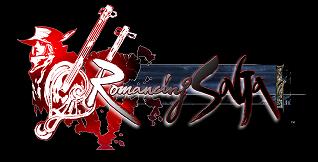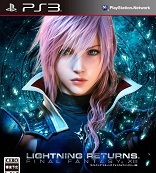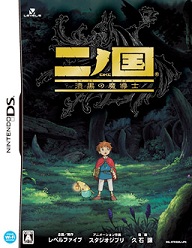<
Square Enix USA has just recently shipped Romancing SaGa to retailers. At its core, this is a remake of a game North America never got. There are tons of additions and modifications that make the game far beyond a normal remake, but the fact remains we have no original to compare it to. Thus, RPG Land brings you “The HiStoRy of SaGa,” a brief look at the series leading up to this point.
 |
When Romancing SaGa hit the Super Famicom in 1992, Square knew it had a different kind of game on its hands. It wasn’t quite as off-beat as later titles like Unlimited Saga, but was decidedly unique from the Final Fantasy and Dragon Quest titles of the day. The fact that one starts by selecting one of eight characters was one thing, and then came the other SaGa oddities. For one thing, just like today’s remake, the original required players to select a character’s weapon before attacking, as several could be equipped. It was surely with subtle differences like the weapon selection and big differences like selecting your parents’ occupation at the start of the game in mind that Square decided not to bring the game overseas.
They probably made a good call there. With RPGs certainly being a niche genre at the time (far, far more so in those days than today or pretty much ever), an RPG as different and seriously difficult as Romancing SaGa didn’t have very good chances of survival in the U.S.
This happened two other times on consoles, as neither Romancing SaGa 2 (1993, cover art here) nor 3here) would be localized for the English-speaking market. After not even getting the original, these two titles, which began to stray even farther from “tradition,” stood even less a shot at success in the States. Perhaps the biggest change Romancing SaGa 2 brought to the series was the mid-battle learning of skills. This would be used in some later titles, including the newest one. The system goes that a character using a familiar weapon can sometimes learn a brand new skill with said weapon and unleash it right then and there. (1995, cover art
Both 2 and 3 were of course, very non-linear titles–another SaGa signature. The gameplay style was not unlike that of SaGa Frontier and the PS2’s Romancing SaGa in that it was mostly free roaming, with just enough story to give each main character a purpose and a conclusion, then letting the players decide the rest. Again, Square probably made the better business decision in leaving them in Japan.
Hold My Hand…
You know what’s awesome? I just went out of order. The first SaGa games were on Game Boy. I went out of order in this feature, symbolic of the way you play SaGa games. I know…blows your mind, doesn’t it?
 |
1989 saw the technical beginning of the series…in handheld form. There were three original titles on Game Boy before a colorful remake of the first one came to the Wonderswan Color as “Makaitoushi SaGa.” Being a Wonderswan Color game, Makaitoushi (screen shot here) didn’t come to the states. These games did come to America, but in disguise. For English localization marketing reasons, they were renamed Final Fantasy Legend. They were received pretty well, because they weren’t quite as radically different as the console SaGa games. In fact, many people even today don’t realize that these titles are not part of the Final Fantasy series. They allowed the selection of one’s entire party from the beginning of the game, and players did so from a group of humans and other creatures. The games featured a first-person view of the battling enemies, and as was the style at the time, attack animations were nothing overly awe-inspiring.
Despite the moderate success of the three Final Fantasy Legend titles that snuck into America, it wouldn’t be until 1998 that we would see the series on a TV screen (aside from that Super Game Boy device, but nevermind that).
New Frontiers
SaGa Frontier showed up on Sony’s PlayStation and introduced the non-importing RPG audience to the non-linear, super-deformed, combo-attcking fiesta that is a SaGa title. As if acting out what would have happened if one of the SNES titles had come over, most North Americans found SaGa Frontier to be a disappointing experience. Its tremendous non-linearity left many feeling lost. Its artistic style left the newly enlarged crowd of Final Fantasy lovers disgusted. As well, the non-traditional method of leveling, combat in general, and difficulty of the game was simply not what most American RPG players were used to, and therefore the game garnered numerous negative reviews. The game used versions of the mid-battle skill aquisition and growth system that previous titles had.
The game did find its audience, though, and SaGa Frontier 2 arrived here two years later. What’s most ironic about SaGa Frontier II‘s existence is that its immediate predecessor was supposed to be the last entry in its series. Whatever the reason for Squaresoft going back on its statement, SaGa indeed saw another Frontier on the PlayStation. While sharing noticeable similarities with its elder, there were also a number of differences. Among them are water-colored backgrounds (which are gorgeous, by the way), yet another oddball way of storytelling, and two different battle systems. Overall, part 2 seems to have better street cred than the first Frontier, but there were still some who preferred the gameplay of the former. Check the reviews for more detail.
No Limit Soldier
Even among the traditionally weird SaGa lineup, there is one that is decidedly the biggest oddball of them all: Unlimited Saga. Heck, Square Enix even decapitalized the “g” and put the game’s logo sideways on the box. You knew something was up. Unlimited Saga was, in the words of series superstud Akitoshi Kawazu, “an experimental game.” Even in the face of bad reviews, and an apology from the US localization staff, Kawazu himself has never openly regretted any particular aspect of Unlimited Saga, insisting that gamers playing a SaGa game should expect just that: a SaGa game. Not Dragon Quest or Final Fantasy. Ignoring common sense, most of the North American audience was expecting a title that played exactly like a traditional (and comparatively easy) RPG, and the title was met with widespread opposition. Personally, I had a good time with it. Read the review for more detail.
Son, can you play me a memory?
And now we come to the highlight of all of this, a review of Romancing SaGa. Before you go into that page, I’d like to preface this review by explaining the significance of this particular title. The game is called Romancing SaGa: Minstrel Song in Japan. I would have much appreciated leaving the Minstrel Song in the title for the US version, as there it has a significant meaning. And no, I’m not just referring to the Minstrel character in the game.
 |
SaGa games have usually been a blend of fantasy elements (both new and traditional) and themes from the Renaissance. Examples of ties to the Renaissance include the series’ style of artwork, the character Lute’s name and instrument in SaGa Frontier, and several others peppered through the series. During this time period, there were multiple varieties of traveling entertainers called Minstrels. These folks went from city to city playing songs and telling stories. In their travels, they would hear new stories, new versions of old stories, and of course new songs. Many made a practice of learning the new tunes and retelling their stories in other cities they would later visit. Are you starting to see the comparison to the new Romancing SaGa?
It is well demonstrated in the game’s opening video when the Minstrel of the game is singing the theme song and walking through various areas of the game. In that same way, Akitoshi Kawazu took a trip through the series in search of the best parts.
As RPG Land reported during the Tokyo Game Show of 2004, Romancing SaGa: Minstrel Song has been described by its developers as a functional compilation of the SaGa series. Ingredients include all the best features of previous entries into the series: The story and characters of the original, with super-updated graphics and extra quests; the mid-battle skill learning of Romancing SaGa 2, now called a “glimmer;” The growth system of Romancing SaGa 3; The free scenario, Life Point, and combo systems, as used in SaGa Frontier; the Sketch Motion cinema graphics from Unlimited Saga; probably others that slipped by my SaGareview. radar. This game is truly a mix like you’ve never seen before. Playing it and reviewing it was a pleasure. Read the
Thank you for reading. I hope you enjoyed this feature. My thanks to Quinton Alexander for the banner image.
Essential Reading
And when reading the above reviews, please keep in mind that our scoring system places 5 as the “average,” not 7 like many places. And forgive me for saying sharing some of my comments here with my reviews. I can only get so creative.








